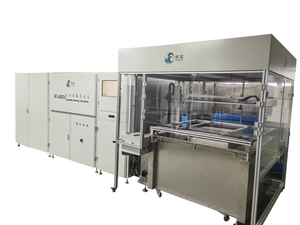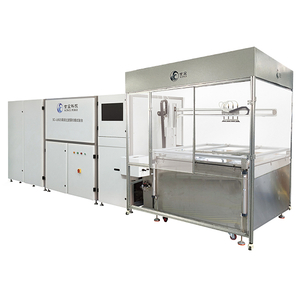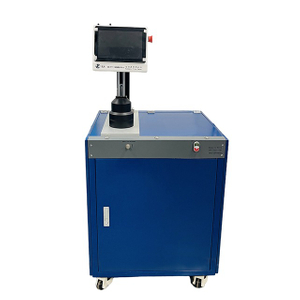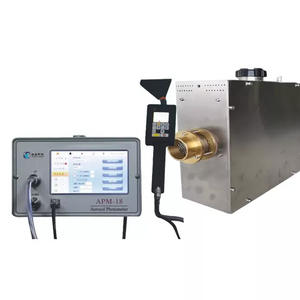In today's environment of serious air pollution, high efficiency air filters are becoming more and more widely used in both industrial fields and people's daily lives. High-efficiency air filters are the key equipment to guarantee the air quality of indoor and clean room. In order to ensure the filtration efficiency and safety performance of HEPA filters, strict testing and verification are required. How to choose the most suitable HEPA testing equipment is a problem that should not be underestimated. This article will introduce how to choose the right HEPA filter testing equipment to obtain accurate results.
1. Introduction of high efficiency filter
1.1 Application scenarios of high efficiency filters
HEPA and ULPA are the main classifications of high efficiency air filters, which are widely used in electronics, food, pharmaceutical, biological, chemical, medical and aviation fields, especially in applications requiring high cleanliness and high purification levels, such as operating rooms, laboratories and clean rooms. When choosing high efficiency air filter testing equipment, it is necessary to consider whether its applicable application scenarios meet the actual needs. Filters applied to different scenarios have differences in the aerosol and air volume used for testing.
1.2 Common sizes of high efficiency filters
The common sizes of high efficiency filters are mainly 595*595mm, 495*495mm, 290*595mm, 290*495mm and 592*592mm. In addition, according to different applications, some filter sizes can reach 1220*1220mm, or even 1830*1220mm. these sizes can be adapted to different air purifiers, air conditioning systems, and fresh air systems.
1.3 Rated air volume range of high efficiency filters
According to different use scenarios and demands, the rated air volume range of high efficiency filters may also vary. The rated air volume range of ordinary high efficiency filters is 300-1500m³/h, while for places with high cleanliness requirements, such as clean rooms and operating rooms, the rated air volume range may be larger.
2. HEPA/ULPA filter testing
When testing the performance of HEPA/ULPA filters, it is usually necessary to use HEPA/ULPA filter testing equipment. According to the different use scenarios, it can be divided into filter ( element ) testing equipment, installed filter testing equipment. And the installed filter test equipment can be divided into air outlet test equipment, purifier test equipment, etc. according to the use of the filter. These equipments need to use particle measuring system, differential pressure tester, air volume tester, etc. Among them, particle measuring system is one of the most commonly used testing equipment.
2.1 Test media of HEPA/ULPA filter testing
In terms of testing media, substances such as particulate matter and harmful gases are usually used to simulate the real use environment. Particulate matter for filter element testing usually uses DEHS aerosol, and when the filter material is PTFE or the use scenario of the filter is semiconductor workshop, etc., it needs to use PSL solid aerosol. For the detection of filters after installation, DEHS and DOP are used for clean room air outlet leak detection, and cigarette smoke is used for air purifier whole machine detection. And harmful gases usually use organic substances such as formaldehyde, sulfur dioxide, nitrogen oxides, benzene, and inorganic substances such as ammonia, chlorine, fluorine, ozone, etc. to simulate harmful gases in the air.
2.2 Particle Measuring Systems for HEPA/ULPA filter testing
There are two main types of particle measuring systems for high efficiency filter testing: laser particle counter and photometer. Among them, laser particle counters are mainly used in filter efficiency testing and scanning leak detection of filter elements, as well as scanning leak detection of filters after installation and testing of air purifiers as a whole. The photometer is not as widely used in filter testing as the counter, and is only used in scanning leak detection of installed filters.
2.3 How to choose the right HEPA/ULPA filter testing equipment
1)Testing purpose
First of all, the purpose of the test needs to be determined, that is, which performance indicators of the high-efficiency filter are tested. The main performance indicators are overall efficiency, local efficiency, scanning leak detection, resistance, etc.
2)Equipment quality
Equipment quality is the key to test precision and data accuracy. Therefore, we need to choose the equipment with guaranteed quality.
3) Capacity and testing speed
Different test equipment has different test capacity and test speed. We need to choose the equipment with the capacity and speed suitable for our testing needs. The testing speed and testing volume should match with the production volume in order to effectively control the quality of each filter.
4) Portability
Some test equipment can be easily carried, which is very useful for application scenarios that require frequent movement of test equipment. For example, high efficiency air outlet testing system and some occasions where the filter element needs to be tested on site, portable testing equipment is more suitable.
In conclusion, high efficiency filter is a very important equipment and high efficiency filter testing equipment is needed to test its performance. When choosing testing equipment, we need to consider several factors and select the right equipment according to the actual needs. By reasonably selecting test equipment and test media, we can more accurately evaluate the performance of high efficiency filters to ensure their filtration efficiency and protect the safety and health of the working environment.













